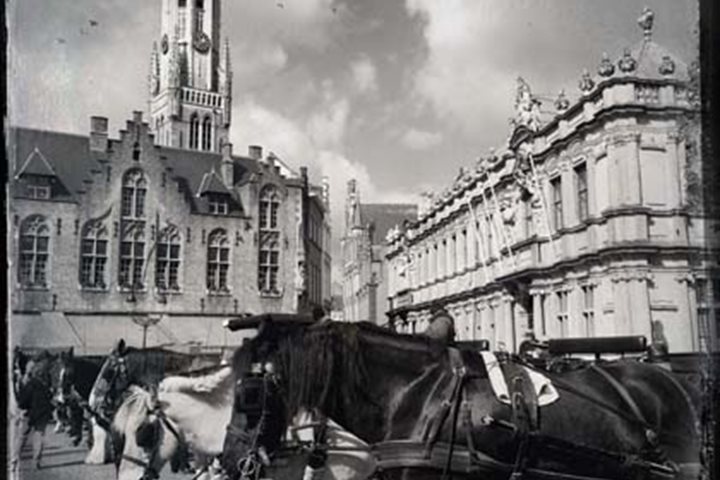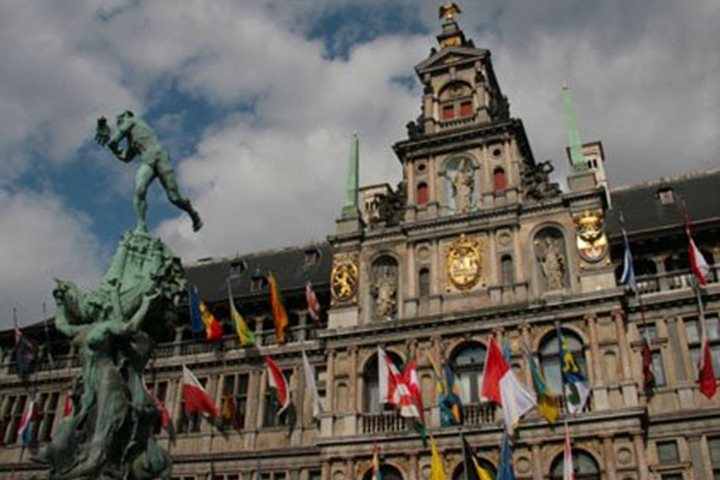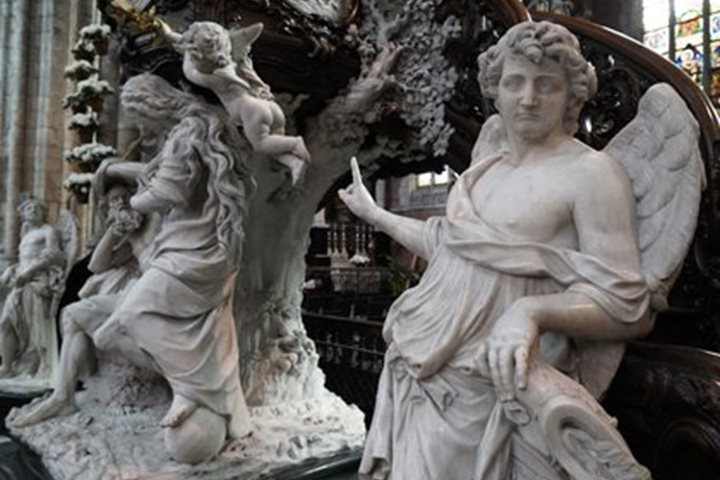Ghent is a classic example of what draws people to the cities of northern Europe. Despite it being a city that is very much active, modern and alive, the legacy of its mediaeval golden age is still present in every corner of the old town. Spires and stone towers dominate the skyline, and cobblestones are almost always underfoot.
In the morning, many of us chose to enter the city by Zodiac, past a lock and into the canals. In doing this, we were able to watch the thriving port gradually fade away to be replaced by the beauty of the mediaeval city. On reaching the centre, we went on foot through the town with our local guides who were able to provide an informative and fascinating commentary on the history and sights of the city. Highlights included the castle, called Gravensteen or “Castle of the Count,” which was constructed in 1180. This massive stone structure has a powerful presence, and we were able to explore its many halls and vaults before ascending narrow spiral stairways to take in the commanding vista offered from its roof.
Saint Bavo’s Cathedral, originating in the 10th century, is another of Ghent’s many famous buildings. Along with being able to enjoy the church itself, we were also extremely fortunate to get a viewing of Jan Van Eyck’s early 15th -century work, “The Adoration of the Mystic Lamb.” Housed in a quiet, dedicated space so it can be contemplated in peace, this masterpiece is a truly astonishing display of the artist’s technical prowess and fine sense of aesthetic. Many other works of fine art filled the building, and we enjoyed them against a backdrop of haunting harp music from a local harpist who was a regular in one of the smaller chapels.
After taking in the high points of the cities visual and architectural heritage, we went on to experience some of Belgium’s legendary culinary tradition in the Belga Queen Restaurant. Courses of mussels, salmon, cod, beef, and – of course – a dessert of Belgian chocolate were elegantly served up in the surroundings of a tastefully modernised granary. To add a further Belgian twist, each course incorporated in some way a Belgian beer amongst the ingredients. Belgian beer is widely considered to be some of the finest in the world.
On our return to the ship in the evening, we were given the option to further experience this through a tasting session. Here we tried two classic Belgian ales made by monks in the Trappist monasteries. And, as Belgian beer is best enjoyed as part of a broader culinary experience, it was served alongside fresh oysters.
After dinner, we were treated to a performance of traditional Belgian music by the quartet Mandolinman. In all, the day was a great experience of a fine North European city.









